| Columns Retired Columns & Blogs |
World's Best Headphone: The Focal Utopia
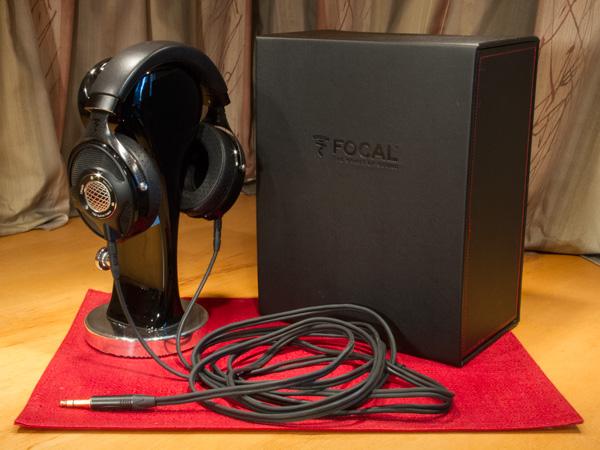
This story originally appeared at InnerFidelity.com
Über-expensive headphones are the bane of my existence. They should sound damned good, but historically they all to often have fatal flaws that degrade perceived performance to the point that they really aren't all that much better than some headphones of a much lower price. Sure, they're usually excellent in some ways, but for me a flagship headphone should have a strong balance of performance across the board in addition to areas of outstanding sonic character.
As much as it grates on headphone enthusiasts with normal-sized wallets, flagship headphones are also luxury items and it's perfectly understandable that they're price accordingly...as long as the luxury is really there. In every way from leather pads to carbon fiber parts to high-quality connectors, materials of a $1000+ headphone should be of very high quality....and when the price exceeds $2000 the bar gets even higher. A headphone in this category should never feel or appear cheap in any way.
On these two points, Focal has nailed it...on a couple of levels! First, and maybe most importantly, the recently reviewed Focal Elear at $999 competes very strongly with all other $1000+ headphones and, to my ears, bests them in terms of over-all balance. Second, that's right, Focal's step-down from flagship headphone is already competing head-to-head with the field...and in this present review we'll take a look at their top-of-the-line Utopia ($3999) to see if we're breaking into new territory.
Focal Utopia ($3999)
Okay Utopia, $4k huh, I'm lookin' at you, this better be good.
Oh my, this is a sexy headphone! In my world, killer audio gear is black, and the Utopia is unapologetically, confidently, bad-ass black. Sumptuous black lamb-skin leather covers ample memory foam ear and headband pads. Curvaceous carbon fiber yolks with black-on-black Focal logo attach to the gloss black plastic capsule housing on one end, and slide into the headband through black anodized aluminum headband end fittings. Black metal mesh and matte black plastic outer capsule covers are accentuated by a black anodized driver rear cover ring emblazoned with "Utopia - Beryllium - Fabrique en France." A brushed aluminum grill covers the central rear driver hole. Outer capsule housing holds connections for the two black Lemo connectors on the headphone's cable, which is terminated at the player end with a high-quality Neutrik 1/4" phone plug. All-in-all this is a stealth-black sexy build, with terrific materials, and just the right balance of understatement and bling. A headphone that looks like a million bucks, yours for the paltry sum of $4000. Yes, go ahead and open up the black leather with red stitching accent display case and show it off to your buddies, the Utopia is a battle-ready flagship headphone.
At 490 grams (sans cables) I'd consider it a hefty headphone. For comparison: Audeze LCD-2=570gr; HiFiMAN HE1000=470gr; Ether Flow=400gr; Sennheiser HD 800 S=380gr; Focal Elear=438. Even though weight is a bit on the high side, the Utopia remains a very comfortable headphone. The lambskin leather over memory foam headband pad is plush and distributes the weight over about half the width of my head; the similarly covered earpads have a generous 60mm x 50mm openings and are about 23mm thick with some additional depth in the rear due to the angled driver. These should work just fine for folks with big ears. Caliper pressure is spot on.
The only ergonomic niggle I have is that the cable is quite heavy and can pull significantly as you move around, or increase the headphone weight if the cable is dangling—I ended up putting a small loop of cable on my lap when I listened to lower the dangling weight. While I'm on niggles, the carbon fiber yolks seem to creak a little in the headband adjusters when you manually hold the earcups in each hand and twist. I think it's just a bit of stiction of the carbon fiber agains the sliders of the adjustment mechanism. If you've ever heard a racing sailboat take up the wind, you'll know that a bunch of creaking sometimes is an indicator of high-performance materials—that's how I'm chalking this one up. I heard nothing of this noise when wearing the headphones.
Acoustics and Driver
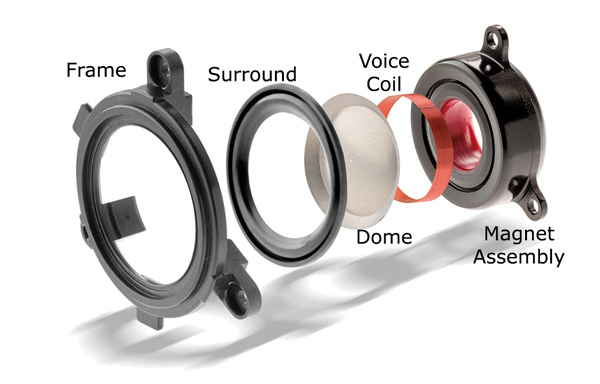
At the heart of the Utopia is a driver unlike any I've seen before. The overall configuration is driven by the shape of the dome itself. Made from an Beryllium, it is extremely light and stiff. Unlike normal plastic film headphone diaphragms, the bulk of the surface area is taken up by the dome. This is important for a number of reasons:
- There is less opportunity for for trapped air resonances around the edge of the dome, outside the voice coil.
- The wide diameter of the voice coil allows for a large opening behind the dome to release sound from the back of the driver with less opportunity for resonances and poor tuning.
- Focal claims the large, stiff dome shape propagates the sound wave front more naturally towards the ear.
Attached to the rear at its annular crease, the dome is driven by an unusual voice coil. Most voice coils are built by wrapping the wire around plastic tube called a former which is then attached to the driver diaphragm. The Elear voice coil is built by wrapping the wire and adhesives around a form, but the form is removed before the voice coil is attached to the dome. This makes for an extremely light voice coil, and therefor a more responsive driver.
The dome is attached to the frame with a surround that acts as a suspension allowing the dome to move back and forth freely. The surround is an astonishing 80 microns thin (about the same thickness as a human hair) and permits the dome to move relatively long distances without impediment keeping distortion low even at high volumes and low, long excursion, frequencies.
Being quite curious about their design process, I sent a couple of question over to the folks at Focal about the differences between the Elear and Utopia drivers. They responded:
The Beryllium dome is 15mg lighter than the Aluminum-Magnesium one. The weight of the mobile assembly of Utopia is 135 mg, whereas the Elear one is 150mg.Moreover, even if the Aluminum-Magnesium M shape dome offers a very interesting mass-rigidity-daping ratio, it can not be compared to the Beryllium one.
As Beryllium is more than 35 times more rigid in flexure than Titanium as an example. This results in an extremely low distortion of the dome itself Moreover, the damping of Beryllium is impressive. The sound velocity of Beryllium is 2.5 times higher than Titanium. These two parameters, plus the lightness of Beryllium offer a dome that will reproduce the audio signal with an impressive precision, without adding or hiding any information contains within the audio signal thanks to an impressive lightness in order to react super fast, very high rigidity to avoid distortion and great damping to avoid sound coloration as an example.
We'll get to it in the Sound Quality section, but I'll say right here and now, there's a clear difference between the Elear and Utopia: the Elear has great punch and dynamic control, but the Utopia bests it in balancing solid dynamic impact with nuanced resolve. To borrow a phrase from the SBAF guys, this headphone has great plankton.
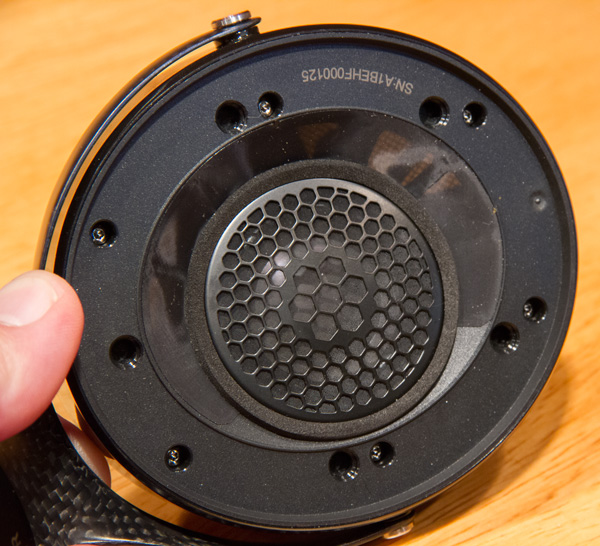
Focal Utopia baffle plate.
The entire driver assembly is mounted to the rear of the angled portion of the baffle plate, and the dome is position slightly forward, aiming back at the ear. Around the driver in the baffle plate is a large array of vent openings covered in a very fine open mesh.
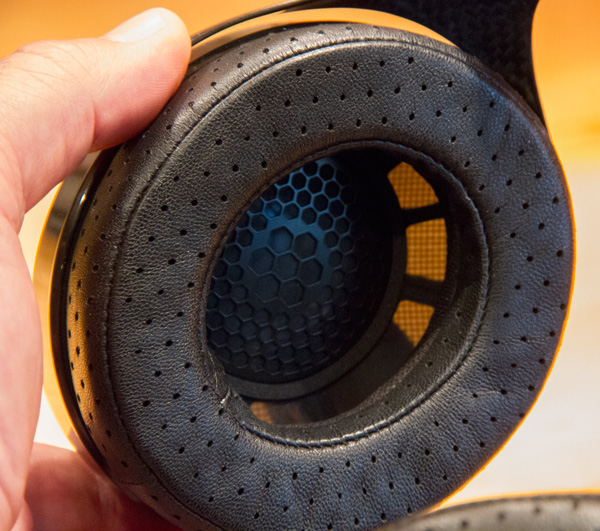
Looking through the capsule you can see this is a very acoustically open headphone.
This leaves a fairly large opening for sound to escape the ear cup, travel through the mesh and into the ear capsule, and exit the ear capsule through the outer metal screen making this a very acoustically open headphone. The sound from the back of the driver exits through the central screen of the outer ear capsule; the two acoustic signals never meet until outside the headphones. Very cool.
Focal's Development Effort
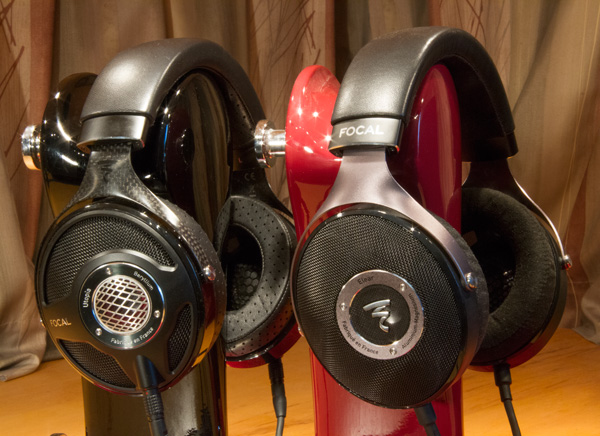
I can't stress enough how astonishingly impressive I find the new Focal Utopia and Elear headphones. I knew Focal was a great speaker builder. I knew they had extraordinary expertise. But I'm not intimately familiar with the speaker world and their acumen within it, and that expertise doesn't necessarily translate directly into the headphone world. To see these headphones appear suddenly and with such command in a domain with which I am intimately familiar is disorienting. It's as if a new mountain just popped into view in an otherwise familiar landscape.
I asked them about their design goals when developing these two new headphones:
Basically, we wanted to achieve the best headphones in their price categories in regards to two key points: performances and comfort. These two points lead the project from the first to the very last step. As an example, on the performance side, this resulted in a totally new driver concept (patent pending). On the comfort side, both Utopia and Elear ensure a very good fit whatever the head size and shape due to an in-depth study and design of the headband and yoke.
I was hoping for a 20 page reply; the project I'm told, has been actively on-going for the past four years. Having been involve with product development projects numerous times in the past and now having experience these headphones, I'm not surprised in the least that these cans were four years in the making. Focal has largely redefined...or better said, refined anew, what it means to be a high-end headphone. A technological tour de force.
Astonishing!
And now to the good part, let's have a listen...
- Log in or register to post comments




































